I stare down a dark hallway trying to gain my bearings when a voice pops in, seemingly out of the ether. It’s warm, almost nurturing, and reassures me that everything will be okay. All I need to do is go forward through the hallway and press the big red button. Upon reaching the room with the button, I see a handheld device, whose manual calls it E-15P. It has a radar-like interface that seems to display odd frequencies. What it’s used for isn’t immediately clear — but the voice assures speculates that it might be useful, so I take it and go ahead with my assignment. I press the button.
Red flashing sirens start going off. The voice in my head seems upset. It’s clear that this is not what was supposed to happen when I pressed the button. Everything goes black and I awaken in a child’s bedroom. The window is partially ajar, but I can’t quite make out what’s in the distance. On the floor is a train set and a carpet that looks like a little city. Drawings are scattered across the wall and the top of the desk. This room is clean, but it’s thoroughly lived in.
Leaving my room, I find some keys. Following the stairs leads me to the door that they’re used on. Walking through the now opened door, I am taken into the world I could only barely see through my window. Ruined skyscrapers pollute the skyline with a dilapidated railway weaving between them. In the distance, a statue of the titan Atlas is holding an island of earth aloft in the air. It’s a breathtaking marvel.
The dissonance between the ruined world and this miracle of engineering (or magic?) are almost shocking. Instinctively, I turn around to return to my room, but all that stands behind me is a doorway, unconnected to a building.
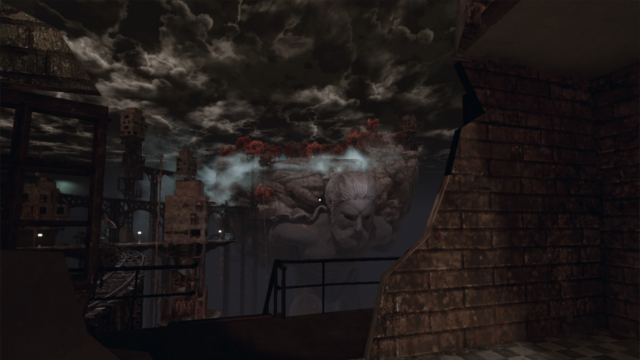
This is the intro to Empathy: Path of Whispers. If this were a review of the first 5 minutes of the game, it’d receive a 10. It lays out so many interesting questions from the very beginning. Who is the voice? What’s this device and how’d it get on that panel? What was the red button supposed to do? How did I transport here from my room? Why’s the world destroyed? And where are all the people?
Sadly, after beating the roughly 10-hour campaign I couldn’t give you a good answer to any of those questions.
Instead of delving into these mysteries, you are sent along an ill-defined quest to do something that will make the red button work. But what that is never clearly gets explained. You just sort of do it, and then are told to continue on your way to press the button — which will somehow return everyone… hopefully.
The Basics
Empathy is like a bad relationship. When you start out you have general vague ideas of what will go wrong, but you don’t know how it will play out. And progressing through the game reveals deep systematic problems.
Each new area introduces new characters and their issues. While there are some consistent characters throughout the entirety of the game, their stories aren’t fully fleshed out — it’s not clear how they got from point B to point A.
You slowly unfurl the story of each area by finding mementos upon which people have imprinted their emotional connections and the events that happened around said emotions. All important mementos require the use of the E15P, while unimportant objects are merely clicked on….though I can’t really say why that is or what determines whether something’s important.
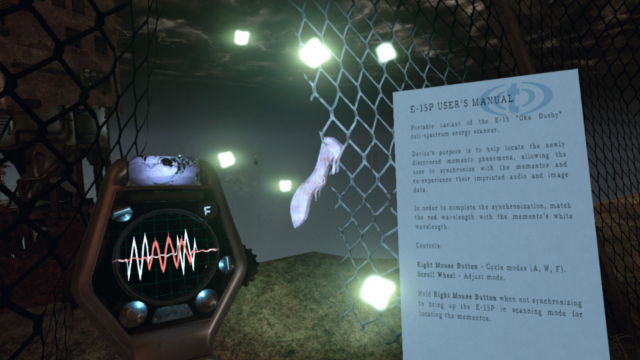
E-15P puzzles start off interesting, but don’t develop as the game goes on.
Interacting with a memento usually rewards you with an audio sample. For instance, a toy sword recalls a young girl named Joyce playing pretend with someone. A clipboard reveals part of Andropov’s investigation. A padlock details the mistreatment of inmates at the hand of their military officer captor.
It’s an interesting format that allows for a huge amount of storytelling opportunities. The concept is wonderful and the implementation works well.
Too bad there are issues. A lot of issues.
For all its merits and initial intrigue, this game goes really wrong really fast — like the aforementioned bad relationship. I wanted to learn more about the story and the world and everything else, but the inner workings of the game actively kept me from doing that at every turn.
It’s time to talk about those gripes. So strap in, because you’re gonna be here a while.
Editor’s Note: Developer Pixel Grounds has since updated this game and patched out many of the issues mentioned below, saying:
The collisions of the geometry, gameplay bugs, and incorrectly compiled materials for wooden huts have all been addressed recently and are no longer present in the release version of the game. We’ve also added additional narration details into the game to give more info about some of the stories found in the world. The game has now a more satisfying ending cinematic too!
Several key components are underdeveloped and unresolved.
The issue with the game’s overall discovery structure is that none of those arcs which are slowly developed in each area ever get resolved — nor do they do much to help you understand the greater mysteries from the beginning of the game. It’s a damned shame too, because I got really invested in learning more about the characters within the first area. But once I realized that this was going to be a trend throughout the game, I started to care less and less.
Why should I pay attention to characters’ plights when the game doesn’t even care to reward me with the resolution?
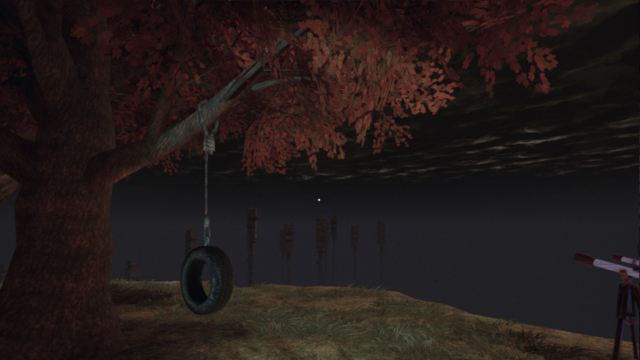
Too much walking for a walking simulator…
Empathy has a walking problem. All of its areas are way too large to walk around and explore in any reasonable amount of time. The train station is one of the biggest offenders in this regard — the building could have been scaled down to half size, and it would have been a way more functional play space to walk through. But the train station isn’t the only guilty party; nearly every building I encountered had this exact same problem.
I hope you like backtracking, because this game is chock full of it. You are often given batches of mementos to find at a time. You’re supposed to use your E-15P as a radar to track them down, solve the frequency puzzle, then continue on your way. After you’ve successfully found them all, you’re given a fresh batch to hunt.
But the problem is that each area has several of these batches to find. So you’ll often backtrack through a level multiple times when you could have gathered all those mementos on the first go round — if only you’d known that you needed to pick them up. This makes absolutely no sense in terms of gameplay. These mementos would have made sense regardless of whether or not you picked them up in their predefined order, so there was no real reason for the game to make me go back to the same area as often as it did.
Signals as mixed as a shaken cocktail
Empathy also sends a lot of confusing signals to the player. I’ll refer back to the train station once more as a prime example. At one point in that area, you’re told to fix the train because you need to get out of the city — even though up until then it was never made clear that you were supposed to be leaving the city at all. As if that weren’t disorienting enough, there was no way to actively seek out options to stay or leave, or how to fix the train, or really anything. All you can really do is follow the path of whispers that pop up on your E-15P until things eventually fall into place for you.
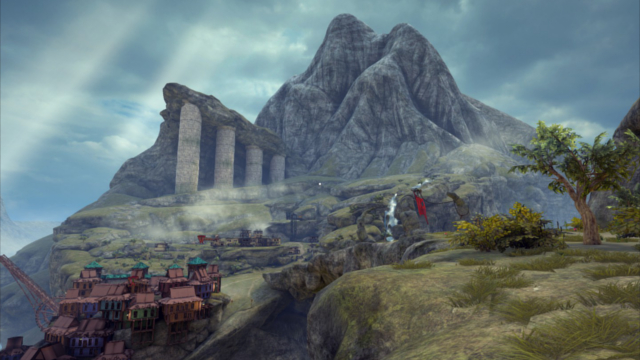
Honestly, the art design gave me a newfound appreciation for vistas.
Turns out that fixing the train didn’t involve finding parts for it, nor did it involve creatively using mementos. Because why would it? That would make sense, after all.
After following mementos for a while, I eventually discovered the memories of a man who once fixed the train. Then I fixed the train through him. (How does this work within the lore? I have no clue!) Even then, though, the train wasn’t ready. It was stated that the train was almost fixed, but not completely. So my goal wasn’t complete? I honestly don’t know, since I eventually rode the train without ever actually finishing that last repair.
Problem-solving is problematic
The few times you actually are tasked with using mementos to solve problems, you don’t really know what you are trying to do. On numerous occasions, I used the E15P to see mementos, and I could tell they were far underground or some other similarly inaccessible place. But the method by which I was supposed to reach these places was never quite made clear. While exploration is a good thing, searching an area for the fifth time with a fine-toothed comb is extremely grating.
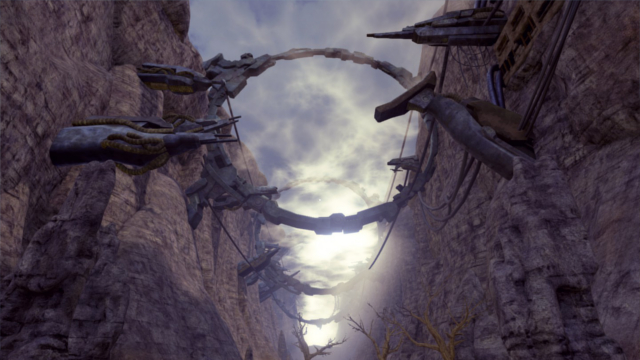
Reused assets are everywhere
Many of the game’s assets are reused several times. While each area has unique architecture, you will explore the same set of buildings over and over again within that area — which really only adds to the extensive walking and backtracking issues I mentioned earlier.
There were a handful of times I got lost because I confused nearly identical landmarks. I do understand that the team is indie — and for the most part, they did a good job of taking the same handful of buildings and using them in interesting ways — but that didn’t really help me when I felt like I was looking at the same interior for the hundredth time.
Glitches Galore!
As if the general structural flaws weren’t enough, I had to fight through some rough glitches to beat this game. One glitch in particular repeatedly crashed the game until it corrupted my data, forcing me to restart the game after I was 3 hours in.
Another glitch wasted about 30 minutes of my time — and almost convinced me that I had to restart the game after about 7 hours — because a hatch that was supposed to be open was now shut. Eventually, I realized you could still use the ladder through the hatch anyhow, so everything was rectified. (Though confusing nonetheless.)
That’s not even counting the smaller quality-of-life glitches I experienced, like all the textures for wood that were missing in an area filled with wooden huts, or the fact that exploring the edges of the game world can make it hard (or impossible) to scale the level geometry back up. And it turns out that climbing the rocks too much will get you irrevocably stuck. Whoops.
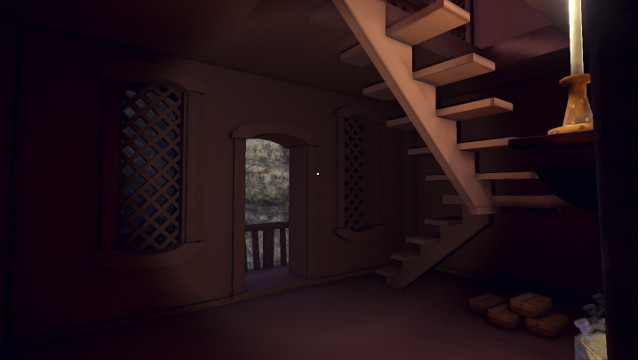
Who needs textures in their game anyway? That’s so 2016!
“The End…?”
Perhaps appropriately, the game ends with yet another question: a black screen with white text that reads, “The End…?”
I know I missed mementos — it comes with the territory — and all the unanswered questions almost assuredly means there is more to the mystery. But when the game design that outlines this whole experience is systemically bad and the story was so unfulfilling the first go around, it’s hard to be at all satisfied with such an open ending. Perhaps “The end…?” is the cruelest question of them all. Do you dare play on to find the answer? I don’t think I do.

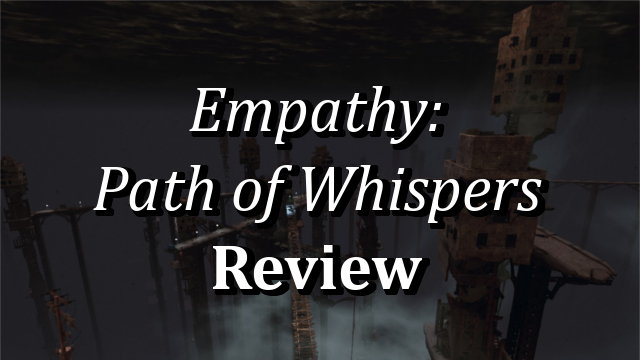





Published: May 15, 2017 03:52 am